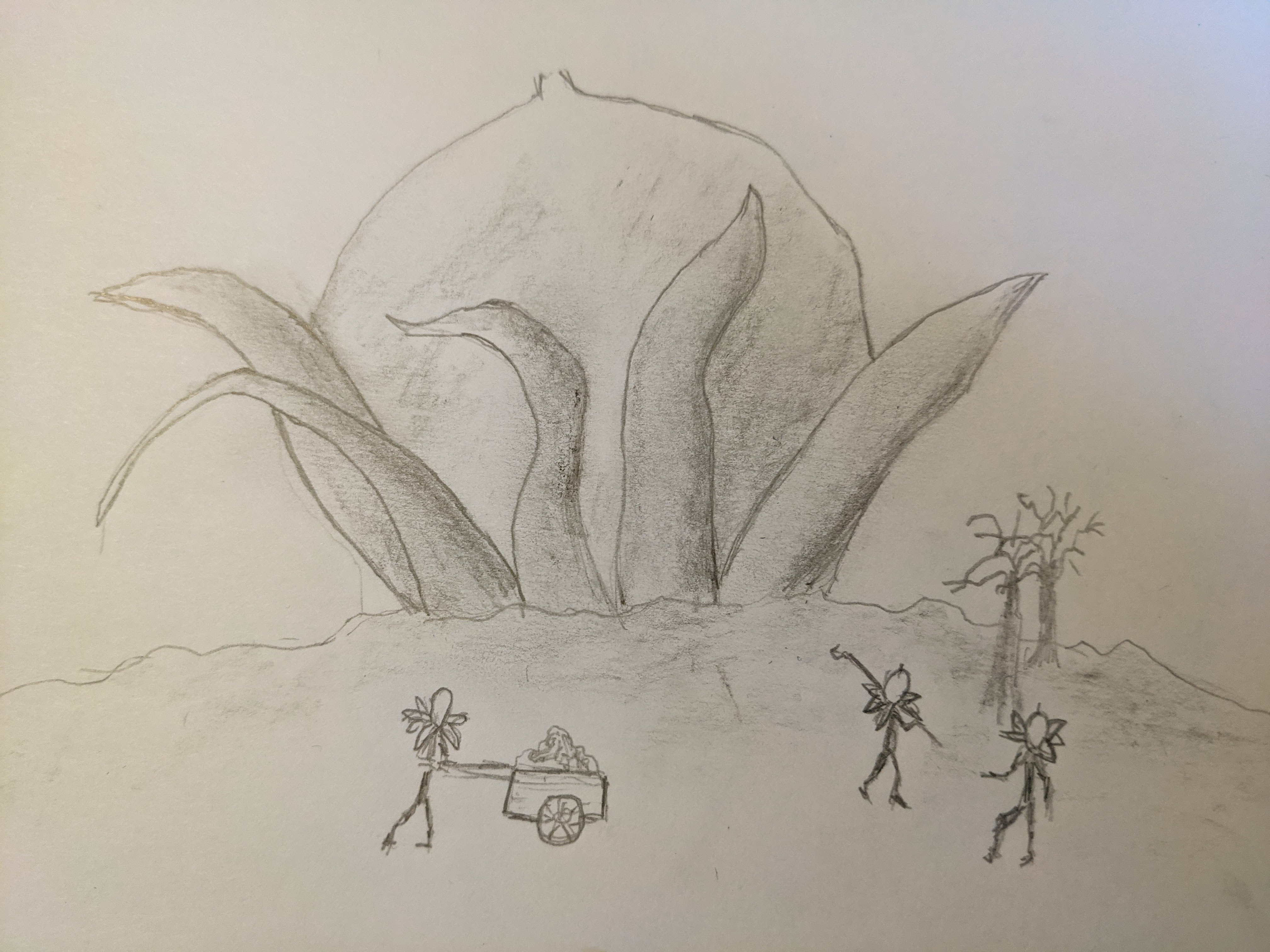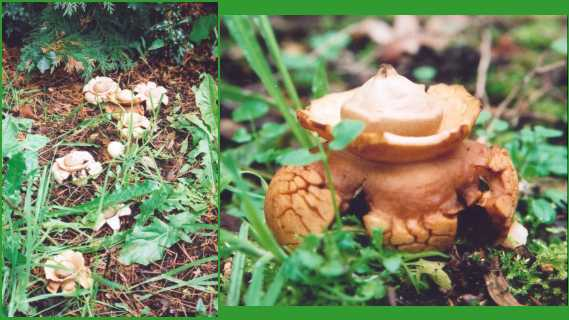
Geastrid
by Cab Davidson
Armour Class: 6
Hit Dice: 4*
Move: 120(40)
Attacks: 1 weapon or special
Damage: By weapon +1 or special
Number Appearing: 1d3+5 (10d10)
Save As: F4
Morale: 9 (12)
Treasure Type: Zero (M)
Intelligence: 11
Alignment: Lawful
XP Value: 125
The Geastrid Myconid is perhaps one of the most peculiar looking humanoids in existence. It begins life as an almost spherical, pale brown ball with a round frill at its base. It grows slowly until it is around a foot across. At this point, it pulls itself out of the ground to reveal a spindly, fibrous humanoid body beneath it, around 7 to 8 tall, and it sets about exploring its immediate surroundings. When 4-8 of them have reached maturity they begin their major toil, which involves exploring as a group and mapping the area around them, in an ever expanding range. They consult an area of earth above their Myconoid, which is typically to be found growing in woodlands but can survive in dirt or soil almost anywhere, upon which earlier generations of Myconids from the same Myconoid will have composed a map (except for the first generation of Myconids, of course). The map will contain details of any creatures found, settlements, lairs, and any and all potential food sources found, including major plant and animal resources and even any reactive ores. Once they have spent several months exploring further, and adding more information to the master map, they eventually choose to sit in an opportune spot, look upwards, and wait for the skin around their heads to peel back in the shape of a star, revealing a spore filled head that puffs spores into the open every time the myconid is jostled, disturbed or rained on.
The Geastrid Myconid can also choose to unfurl its head covering when it is threatened. The very act of doing so will encourage many creatures (with an intelligence score of 5 or less) to have to have to make a saving throw vs. death ray or run away in fear for 3d6 rounds. The Geastrid can then release spores from its head in a cone 15 long and 10 wide at its far end, up to 3 times, and each breathing creature therein must make a saving throw vs. Dragon Breath or fall asleep for 2d6 turns. This is a magical sleep that is not affected by a being disturbed or even slapped, and the victim must make a second saving throw vs. Dragon Breath or suffer horrific nightmares about being attacked by strange egg-like fungi in the void of space until they wake. Any victim who has suffered such nightmares also incurs a -2 penalty to all hit and damage rolls, and a +1 penalty to armour class, until they can get a mostly undisturbed nights sleep. If forced to fight then the Geastrid Myconoid will either attack using its spores or by using weapons they favour pole arms, with which they attack with a +1 to damage.
Each generation of Geastrid Myconid relates the locations of all resources on the map to the Myconoid, which slowly sends mycelium growing towards each. The Myconoid can eventually, over many centuries, grow to an astonishing scale, taking nutrition from food sources that may be tens of miles apart. The Geastrid Myconoid can extract energy and nutrition from nearly anything the bodies of animals, plants and roots, even metal ores. The purpose of this is to gain enough energy to reach its ultimate goal to create a Great Geastrid.
The Great Geastrid is essentially identical to the head of the Geastrid Myconid, but on a massive scale it can reach three or four hundred feet across, four to five hundred feet high, and it produces a near incomprehensible number of spores at a velocity sufficient to perfuse not only the entire atmosphere of the body the Myconoid is growing on, and to be flung into outer space. There the spores can remain viable for centuries, floating until they settle on an asteroid, planet or even vessel upon which they can germinate. The spores are essentially identical to those produced by the Geastrid Myconids, but their dispersal is spectacularly more effective.
Production of Great Geastrids by Geastrid Myconoids is thankfully a rare event, typically only occurring after centuries of growth, and it so depletes the Myconoids that there is 25% chance of the Myconoid dying. If it survives, it is massively reduced in scale and will once again have to start from scratch, finding new resources to grow a new Great Geastrid. Spore dispersal by Great Geastrids takes several weeks, during which time all creatures within 10 miles must make a saving throw vs. Dragon Breath or be affected as if attacked by a Geastrid Myconoids spore attack. Creatures that fall asleep will wake up after the Great Geastrid has finished releasing its spores.
Geastrids have colonised hundreds of worlds, and while they are typically friendly, considered folk, most civilised creatures dont tolerate them once the extraordinary danger of the Great Geastrid has been realised. One they have worked out what the source of the danger is, they will seek out any sites Geastrids grow from and destroy any and all likely sites where the Myconoid may be. Geastrids originated on Mystara, but have been extinct there for millennia. Any Geastrid Myconoids detected there are destroyed by mortal agents sent by the Immortals to do so, the danger they pose being so great.
The science bit: The earth stars are fab looking things. The Geastrid is loosely based on my favourite, Geastrum triplex, which isn't uncommon here (actually there are two species I find locally, G. triplex and G. fimbriatum). The little puffs of spores you get from them when you poke one are just so evocative of the mists and powders of fantasy stories that I had to use that here. I wanted a race of Myconid that might survive as spores travelling through space, and what better candidate could there be than a star fungus?
And this is Geastrum triplex, the inspiration for the Great Geastrid
